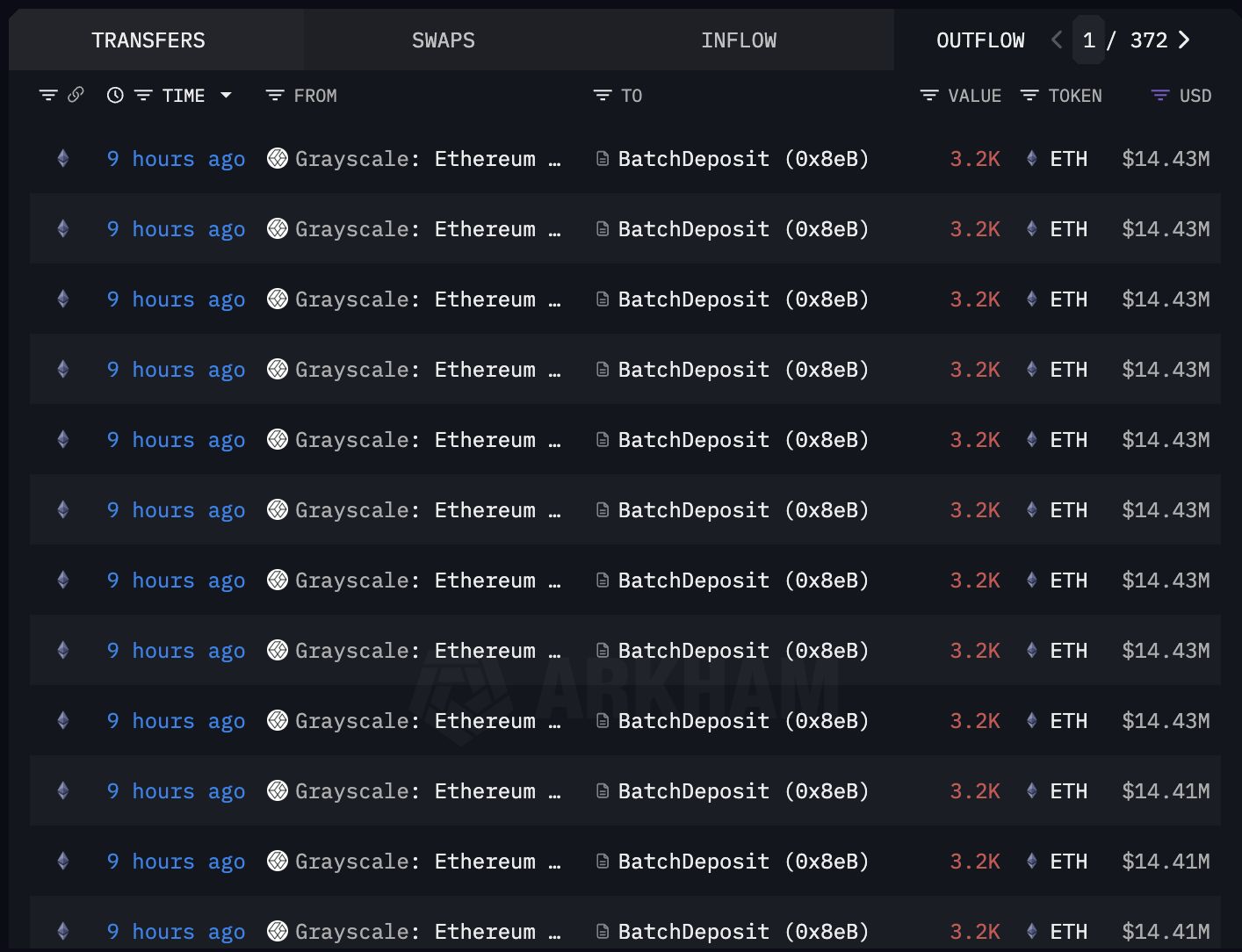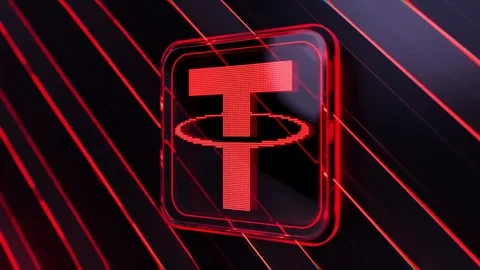The Era of Staking for Crypto ETFs: Grayscale Takes the Lead by Leveraging Policy Differences, Government Shutdown May Delay Approval Process
The article provides a detailed explanation of how Grayscale, navigating compliance and regulatory structural differences, became the first to launch a spot crypto ETF with staking support in the US market, and discusses the impact of this move on the competitive landscape of the stablecoin market. Although Grayscale has gained a first-mover advantage, the capital inflow into its product has been relatively modest so far.
Author: Nancy, PANews
The era of staking for spot crypto ETFs has finally arrived. Recently, Grayscale announced a major development, launching the first spot crypto ETF in the United States to support staking. By leveraging policy and compliance pathways, Grayscale has taken the lead in opening up on-chain staking participation channels, but its capital inflow performance has been relatively subdued. Meanwhile, with the implementation of new universal listing standards for ETPs, competition among spot crypto ETFs is accelerating.
Grayscale Takes the Lead in Enabling Staking, Market Response Below Expectations
On October 6, Grayscale announced that its Ethereum Trust ETF (ETHE) and Grayscale Ethereum Mini Trust ETF (ETH) have officially become the first spot crypto asset ETFs in the United States to support staking functionality.
At the same time, the Grayscale Solana Trust (GSOL) has also launched staking functionality, providing investors with an exclusive channel to participate in SOL staking through traditional brokerage accounts. With regulatory approval progressing, GSOL is expected to become one of the first spot Solana ETPs to support staking. Grayscale has stated that it plans to expand staking to more products in the future.
According to official disclosures, Grayscale will conduct passive staking through institutional custodians (such as Coinbase and Figment) and a diversified validator network to ensure the security of the underlying blockchain protocols while supporting the network’s long-term resilience. In terms of staking rewards distribution, ETHE shareholders can receive up to 77% of total staking rewards, with the remaining 23% going to the issuer, custodian, and staking service providers. For the ETH product, the investor share is even higher at 94%, with only 6% taken by the three parties.
Since the staking feature was enabled, on-chain data shows that Grayscale has staked over 1.16 million ETH. Of the ETH held by ETHE, 49.46% has been staked, while the staking ratio for ETH is 47.79%. According to ValidatorQuene data, the current amount of ETH queued for staking is about 1.36 million, with Grayscale’s staked ETH accounting for 85.4% of this.

The introduction of Grayscale’s staking functionality is seen as filling the gap in staking rewards for Ethereum spot ETF products, providing institutional investors with a new channel for passive income and potentially attracting more capital inflows. However, in terms of capital flows, the market response has been relatively muted. According to SoSoValue data, since October 6, ETHE has seen a net outflow of $1.95 million, while ETH has had a net inflow of about $24.17 million. In contrast, BlackRock’s ETHA attracted over $670 million during the same period.
Taking Advantage of Policy and Compliance Shortcuts to Gain First-Mover Advantage, Government Shutdown May Delay Other ETF Approvals
Before Grayscale officially enabled staking for its Ethereum ETF, several issuers, including BlackRock and Franklin Templeton, had attempted to submit proposals to add staking functionality, but all were repeatedly postponed by the US SEC. Grayscale was able to take the lead mainly by cleverly utilizing structural differences in the US regulatory framework and recent policy easing, thereby bypassing the lengthy traditional approval process.
Grayscale’s ETHE and ETH are ETFs registered under the Securities Act of 1933, rather than funds managed under the Investment Company Act of 1940. Unlike the latter, which requires strict operational approval, the former only requires SEC review of disclosure documents. This means that ETFs can flexibly adjust features, such as adding staking, without directly holding most of the spot assets (e.g., through a trust structure) and without needing additional SEC approval. In contrast, issuers like BlackRock and Fidelity, which operate under the Investment Company Act of 1940, must undergo full approval to add staking mechanisms, resulting in repeated SEC delays.
Last month, Grayscale proposed three amendments to its trust agreement for shareholders, enabling its Ethereum spot ETF products to stake and receive corresponding staking rewards. These included authorizing the trust to conduct Ethereum staking, allowing the sponsor to charge additional staking fees, and granting the sponsor the authority to amend the trust agreement under certain conditions. All three proposals passed with high votes, with the staking authorization proposal receiving 99.75% shareholder support.
More critically, in September this year, the SEC passed universal listing standards for crypto ETPs, allowing exchanges (such as NYSE Arca) to independently approve listings and new feature adjustments for new products that meet basic requirements (liquidity, transparency, and compliance disclosure), without needing to submit a 19b-4 rule change application for each case. After the new rules took effect, Grayscale withdrew its staking feature amendment application on September 29 and successfully obtained SEC approval, allowing its Ethereum ETF to operate under the NYSE Arca universal listing framework Rule 8.201-E, achieving listing and trading without separate approval.
By leveraging the flexibility of policy and compliance pathways, Grayscale has successfully gained a first-mover advantage, becoming the first spot crypto ETF on the market to support staking. As the SEC gradually relaxes regulatory policies for crypto asset ETFs, more issuers are accelerating the launch or follow-up of products supporting staking, sparking a new round of competition. For example, 21Shares recently announced the introduction of staking for its Ethereum ETF and offered a one-year sponsor fee waiver; Bitwise set the Solana staking ETF fee at 0.20%, lower than market expectations, and so on.
However, the US government has entered a shutdown, and the SEC is currently operating with only a minimal number of emergency personnel. This means that the approval process for crypto ETFs will be somewhat restricted, which may affect the rollout pace of staking features for other ETFs in the short term.
Disclaimer: The content of this article solely reflects the author's opinion and does not represent the platform in any capacity. This article is not intended to serve as a reference for making investment decisions.
You may also like
BlackRock Bitcoin Purchase of $426.2M Signals Market Confidence
Polymarket Traders Predict 83% Chance U.S. Government Shutdown Will Extend Beyond October 15
The Next Chapter of Tether
Can Tether evolve from an offshore issuer into a multi-chain, compliant infrastructure provider without compromising its core advantages in liquidity and distribution?

Money, Control, and Decentralization
What tech giants are after is not revenue, but control over models, narratives, and ideas.

